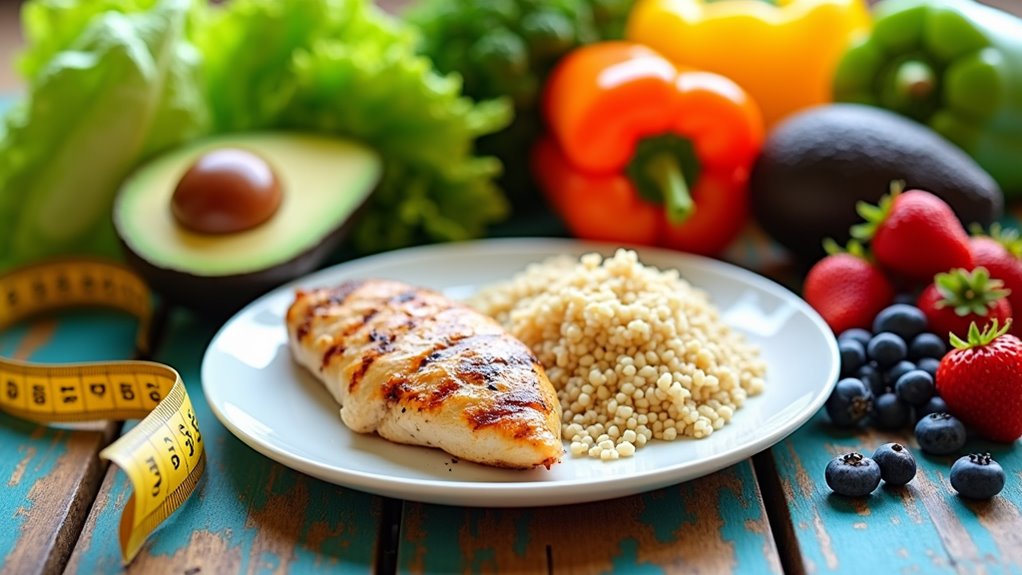The Secret to Losing Weight Without Counting Calories!
If you’re tired of obsessing over numbers and feeling restricted by calorie counting, you’re not alone. While tracking calories can work for some, it’s often unsustainable and can lead to an unhealthy relationship with food. There’s a simpler, more intuitive approach to weight loss that doesn’t require a calculator or food scale. By understanding a few key principles and making strategic adjustments to your habits, you’ll discover how to shed pounds naturally.
Why Traditional Calorie Counting Often Fails
Although calorie counting has been a cornerstone of weight loss for decades, this approach frequently leads to frustration and eventual abandonment.
You’re not alone if you’ve found yourself obsessing over numbers, feeling guilty about food choices, or giving up entirely on your weight loss goals due to the tedious nature of tracking every bite.
The problem isn’t you – it’s the method itself. Calorie counting often fails because it doesn’t account for your body’s complex nutritional needs, hormonal responses, or the quality of the foods you’re eating.
You might find yourself choosing low-calorie processed foods over nutritious whole options, simply because they’re easier to track. Plus, calorie counts on labels can be inaccurate by up to 20%, making precise tracking nearly impossible.
Weight loss without calorie counting is possible when you focus on sustainable habits, intuitive eating, and whole foods that naturally regulate your appetite. Additionally, understanding the importance of caloric deficit in your weight loss journey can help you make more informed choices without obsessing over numbers.
The Power of Mindful Eating Practices
Mindful eating transforms your relationship with food by shifting focus from external rules to internal cues. When you eat mindfully, you’ll naturally make better choices and feel more satisfied with less food.
You’ll become part of a growing community of people who’ve discovered that awareness, not restriction, leads to lasting change. Incorporating mindful portion control can significantly enhance your eating experience and help you recognize your body’s true hunger cues.
Here’s how to practice mindful eating in your daily life:
-
Take three deep breaths before each meal to center yourself and prepare your body for nourishment. Notice the colors, textures, and aromas of your food.
-
Put down your utensils between bites and chew slowly, savoring each mouthful. This helps you recognize when you’re actually full.
-
Remove distractions like phones, TV, or work during meals. Create a peaceful environment where you can truly connect with your food and eating experience.
This approach helps you build trust in your body’s wisdom and join others who’ve found freedom from diet culture.
Smart Portion Control Without Numbers
While tracking every morsel may work for some, you don’t need to count calories to control portions effectively. You can use everyday objects and your own hands as reliable measuring tools, making portion control simple and practical wherever you are.
| Food Type | Visual Guide | Portion Size |
|---|---|---|
| Protein | Palm of hand | 3-4 oz |
| Carbs | Cupped hand | 1/2 cup |
| Veggies | Two fists | 2 cups |
| Fats | Thumb tip | 1 tablespoon |
| Snacks | Handful | 1 oz |
These visual cues help you build balanced plates without stress. Fill half your plate with colorful vegetables, quarter with lean protein, and quarter with whole grains. Remember to eat slowly and listen to your body’s fullness signals. By using these simple strategies, you’ll naturally regulate your portions and feel more connected to your food choices. Incorporating nutrient-dense foods can further enhance your satiety and reduce cravings.
Choosing Quality Foods That Naturally Support Weight Loss
Once you’ve mastered portion control, selecting the right foods becomes your next powerful tool for weight loss.
You’ll find that certain foods naturally help you shed pounds by keeping you fuller longer and supporting your body’s fat-burning processes. By choosing nutrient-dense options, you’re joining a community of health-conscious individuals who understand that food quality matters more than quantity.
-
Focus on protein-rich foods like lean meats, fish, eggs, and legumes – they’ll keep you satisfied and preserve muscle mass while you lose fat.
-
Load up on fiber-filled vegetables and fruits that provide essential nutrients while naturally limiting your calorie intake.
-
Choose complex carbohydrates such as whole grains, sweet potatoes, and quinoa – they’ll stabilize your blood sugar and provide sustained energy throughout the day. Additionally, incorporating leafy greens into your meals can enhance your overall health and support your weight loss journey.
When you fill your plate with these wholesome foods, you’re setting yourself up for sustainable weight loss success.
Building Sustainable Habits for Long-Term Success
Because lasting weight loss requires more than temporary changes, developing sustainable habits is crucial for your long-term success.
Start by identifying one small habit you can maintain consistently, like drinking water before meals or taking a daily 10-minute walk. Once you’ve mastered one habit, gradually add another.
You’ll find greater success when you align new habits with your lifestyle and preferences. If you’re not a morning person, don’t force yourself into 5 AM workouts. Instead, choose an exercise time that fits naturally into your schedule.
Similarly, select healthy foods you genuinely enjoy rather than forcing yourself to eat things you dislike. Staying hydrated can also curb appetite, reducing unnecessary calorie intake.
Remember that setbacks are normal and part of everyone’s journey. When you slip up, simply return to your healthy habits at the next opportunity.

